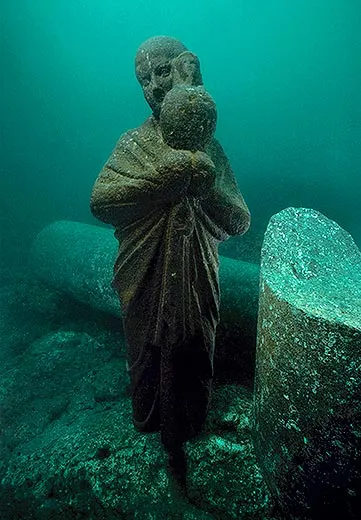The image is likely of a statue from the submerged ruins of Cleopatra’s Palace in Alexandria, Egypt. The exact identity of the statue is unknown, but it is a reminder of the ancient city’s rich history.

The palace was located on the island of Antirhodos, which sank into the harbor following a massive earthquake in 365 AD. The remains of the palace were rediscovered in 1996 by underwater archaeologist Franck Goddio.
The palace is believed to have been a relatively modest structure, but it was nonetheless a significant archaeological find. It is one of the few remaining underwater sites from the Ptolemaic period, and it provides us with valuable insights into the lives of the ancient Egyptians.
#drthehistories







